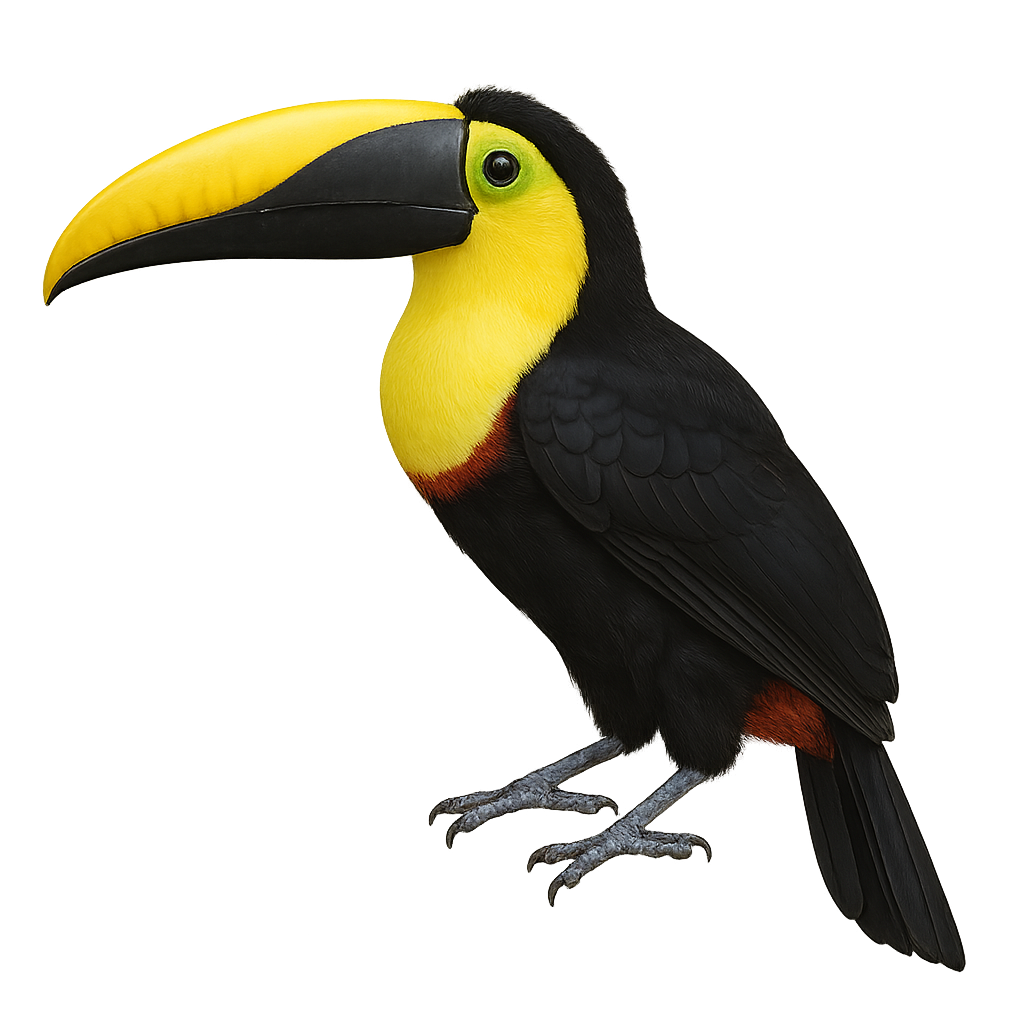Your wildlife photography guide.
Explore the choco toucan in detail, study its behavior, prepare your shots.
Where to observe and photograph the choco toucan in the wild
Learn where and when to spot the choco toucan in the wild, how to identify the species based on distinctive features, and what natural environments it inhabits. The WildlifePhotographer app offers tailored photography tips that reflect the choco toucan’s behavior, helping you capture better wildlife images. Explore the full species profile for key information including description, habitat, active periods, and approach techniques.
Choco Toucan
Scientific name: Ramphastos brevis

IUCN Status: Vulnerable
Family: RAMPHASTIDAE
Group: Birds
Sensitivity to human approach: Suspicious
Minimum approach distance: 10 m
Courtship display: February to March
Incubation: 16-18 jours
Hatchings: February to April
Habitat:
Tropical rainforests, lowland forests, secondary forests
Activity period :
Primarily active during the day, with peak activity in the morning and late afternoon.
Identification and description:
The Choco Toucan, or Ramphastos brevis, is a species of toucan endemic to the humid forests of western Ecuador and southwestern Colombia. This toucan is notable for its relatively short beak and vibrant colors, with predominantly black plumage, a white throat, and a yellow band on the upper chest. It measures about 45 cm in length and weighs between 300 and 400 grams. Often seen in small groups, it feeds on fruits, insects, and occasionally small reptiles. Its natural habitat is threatened by deforestation, making it a vulnerable species. Nonetheless, it remains an iconic symbol of the region's biodiversity.
Recommended lens:
400mm – adjust based on distance, desired framing (portrait or habitat), and approach conditions.
Photography tips:
To photograph the Choco Toucan, it is advisable to use a 400mm lens or greater to capture the details of its colorful plumage without disturbing it. The tropical forests where it resides often provide diffused light, so a tripod can be useful for stabilizing the camera. Be patient and discreet, as these birds can be suspicious. Try to capture images when the toucan is feeding or interacting with other group members, which can offer dynamic and interesting shots.
The WildlifePhotographer App is coming soon!
Be the first to explore the best nature spots, track rutting seasons, log your observations, and observe more wildlife.
Already 1 432 wildlife lovers subscribed worldwide

